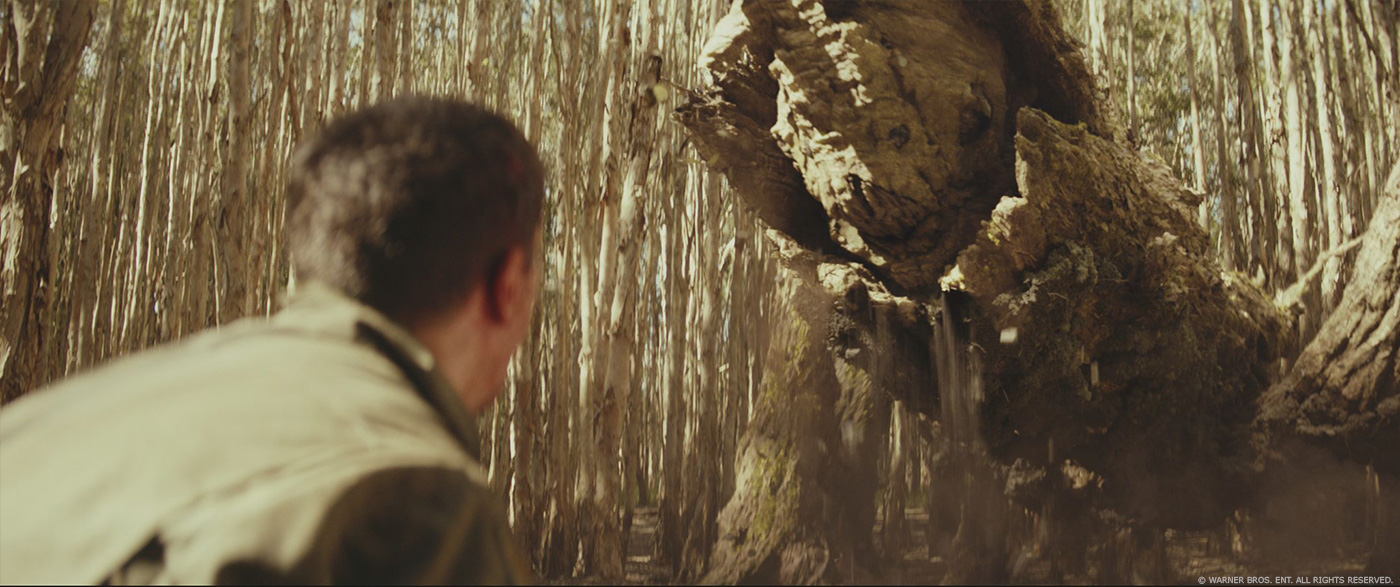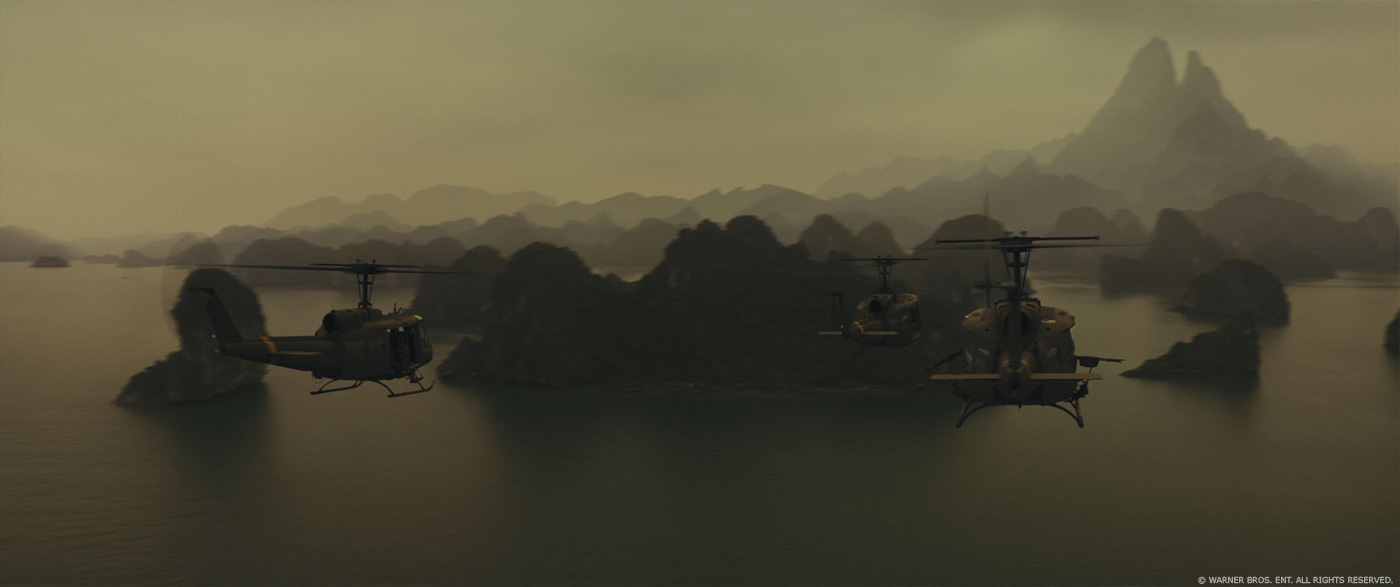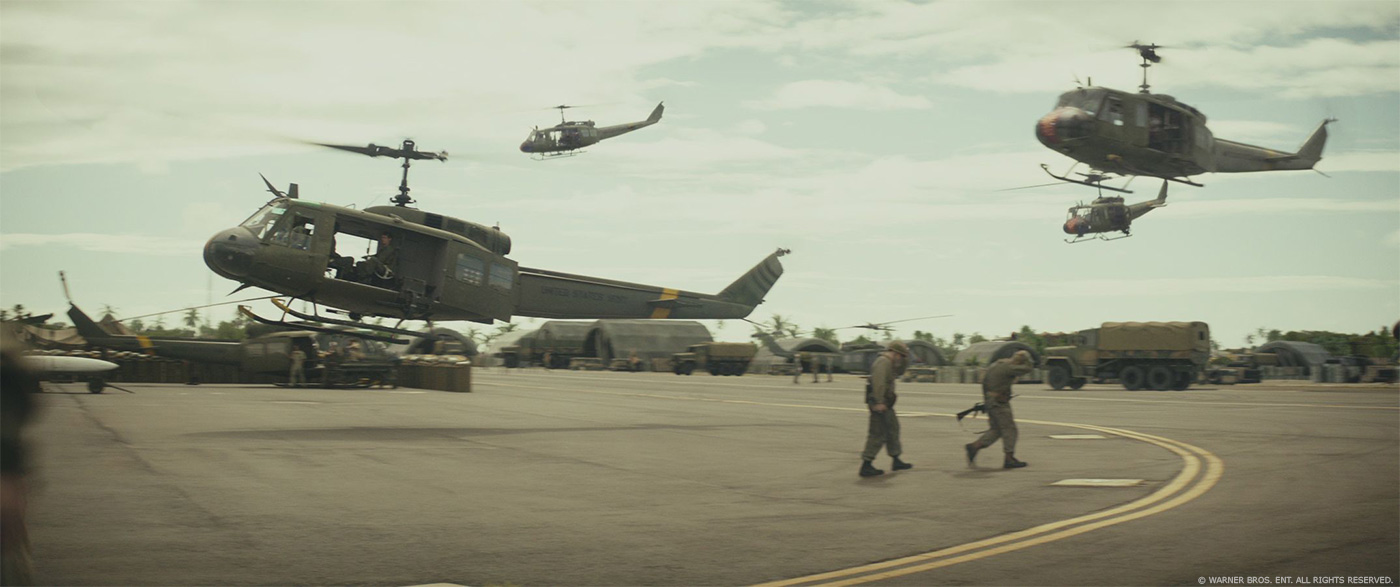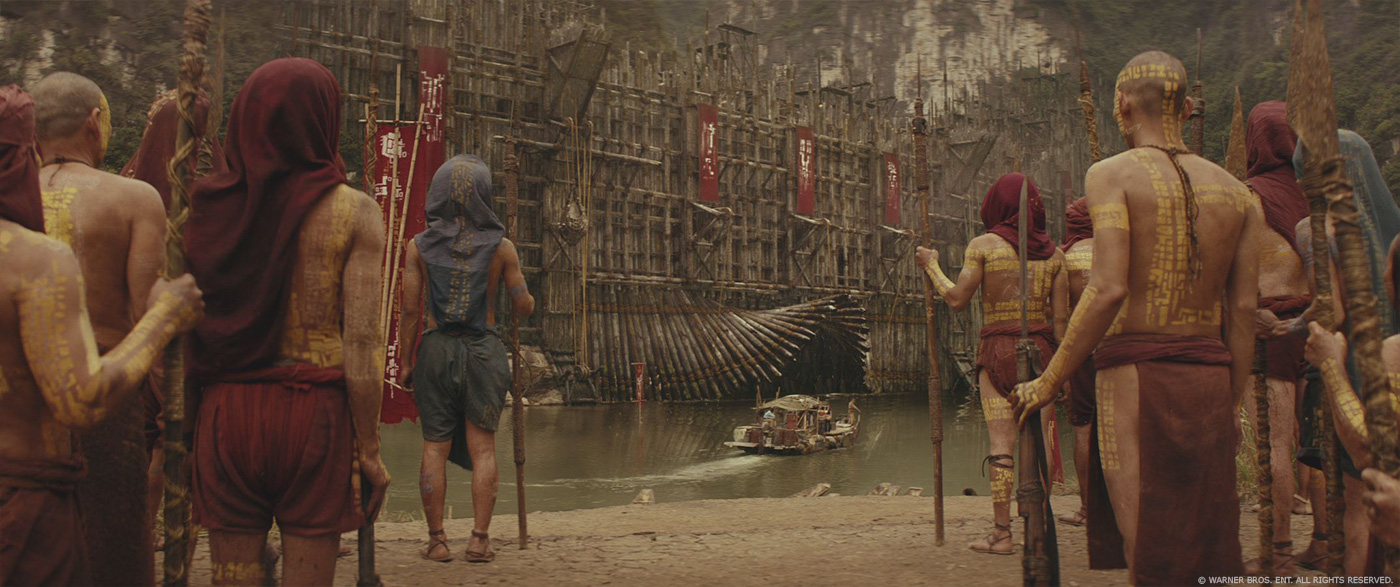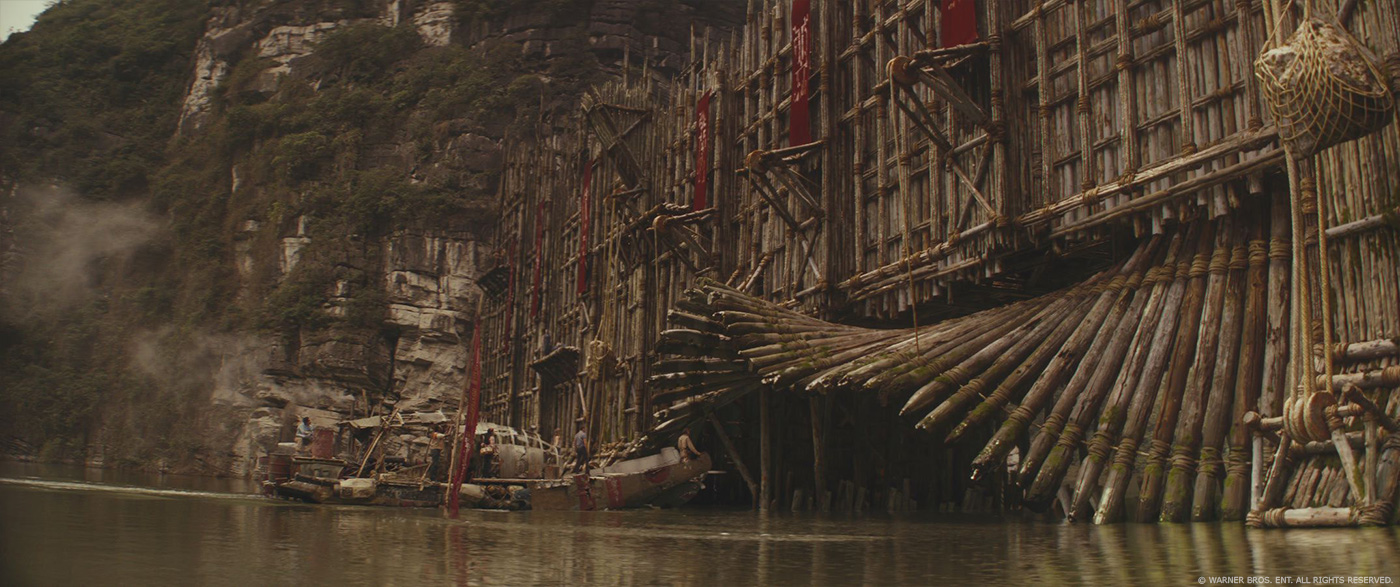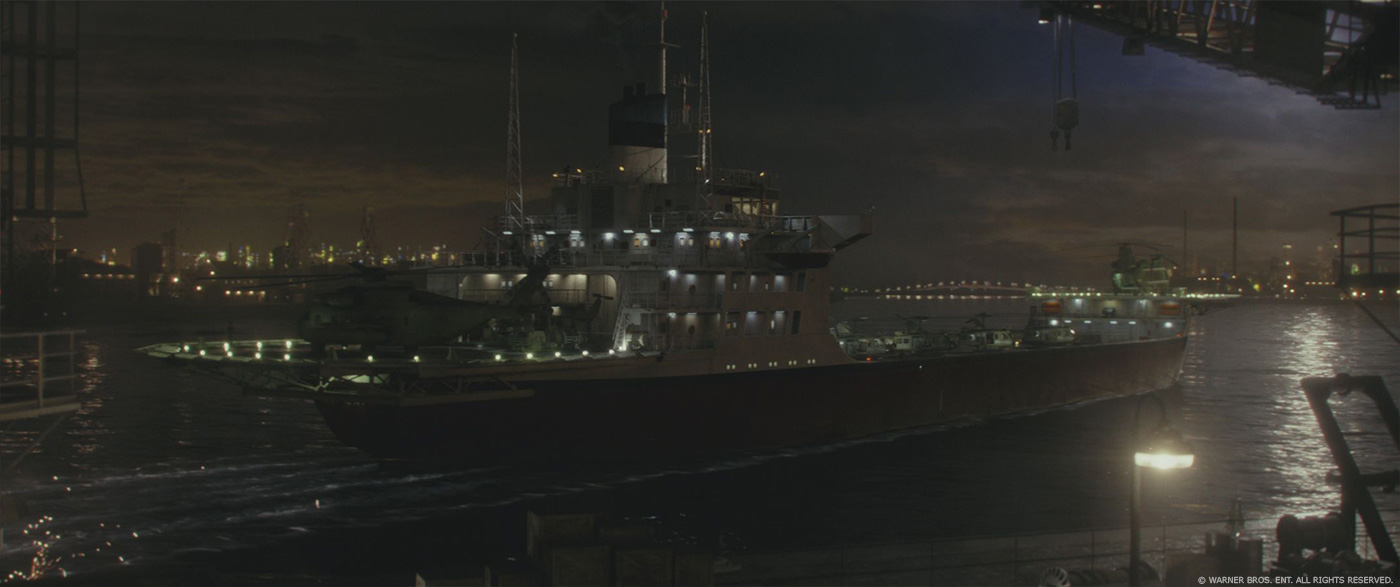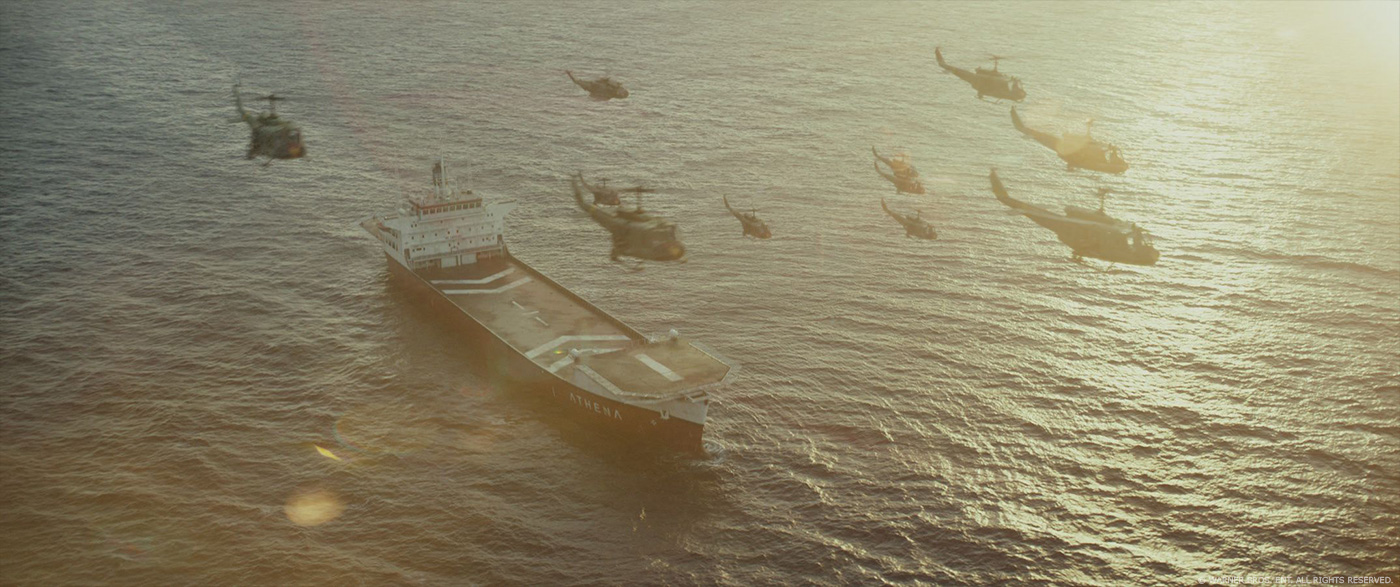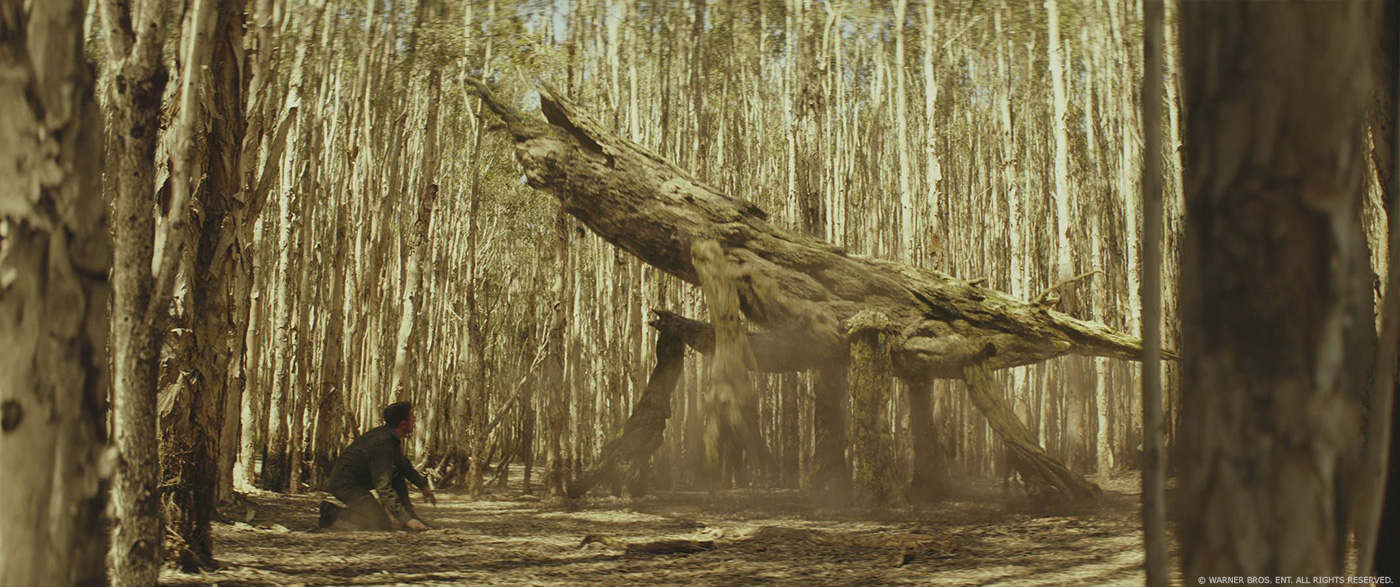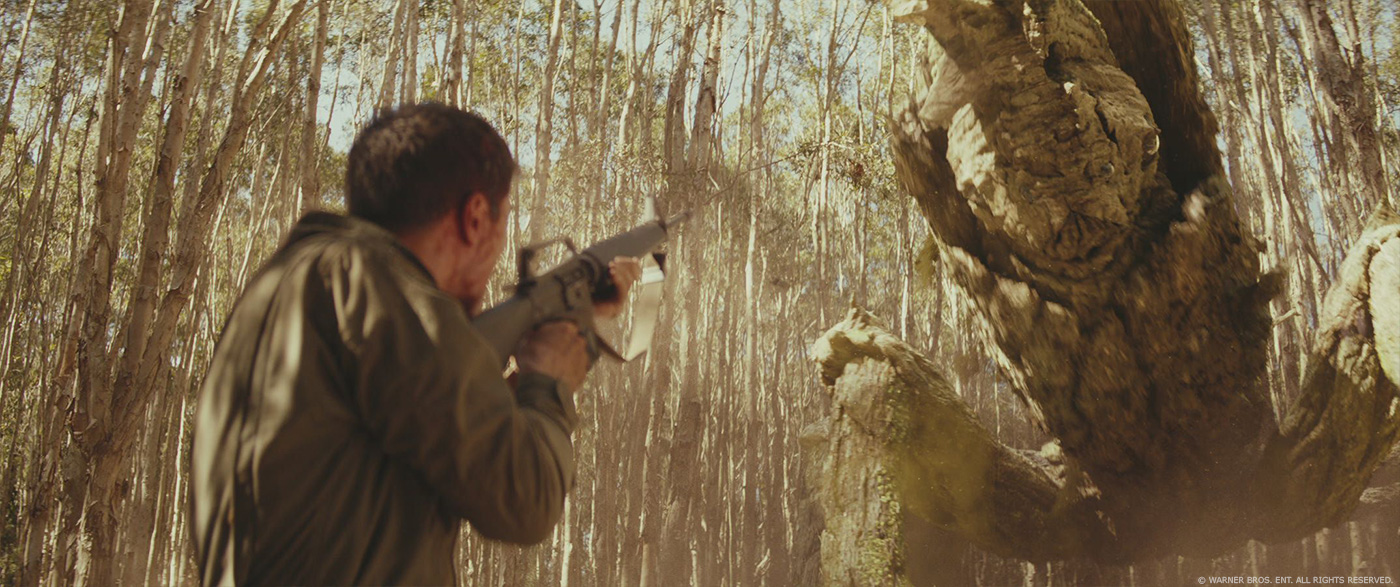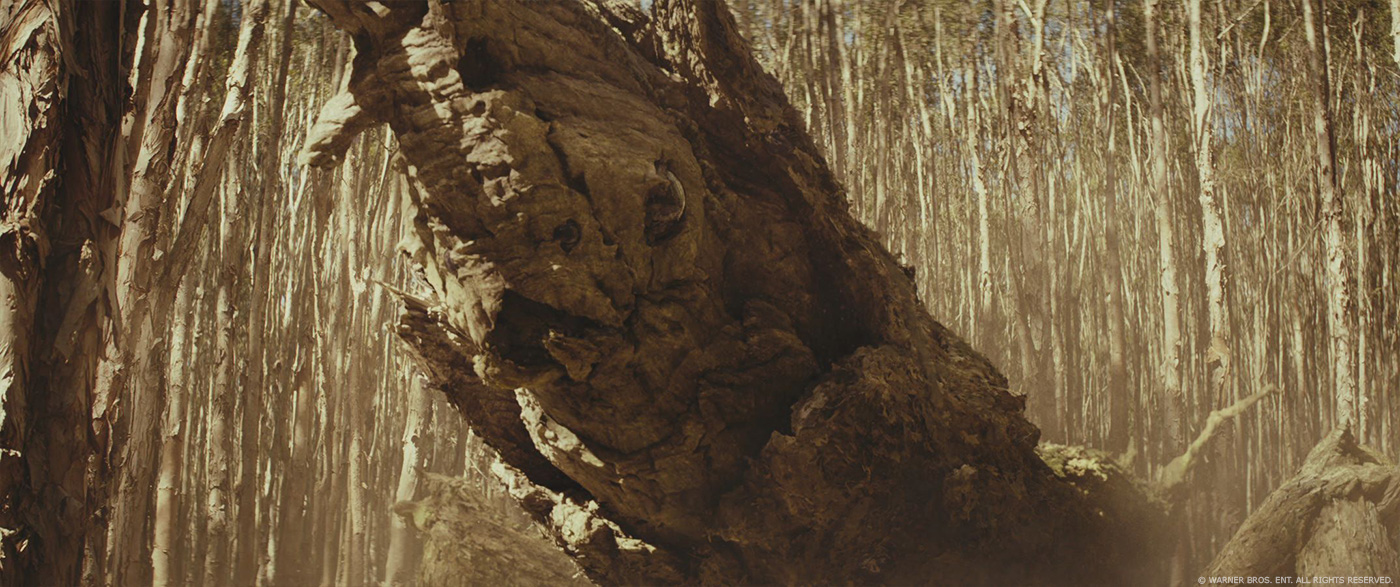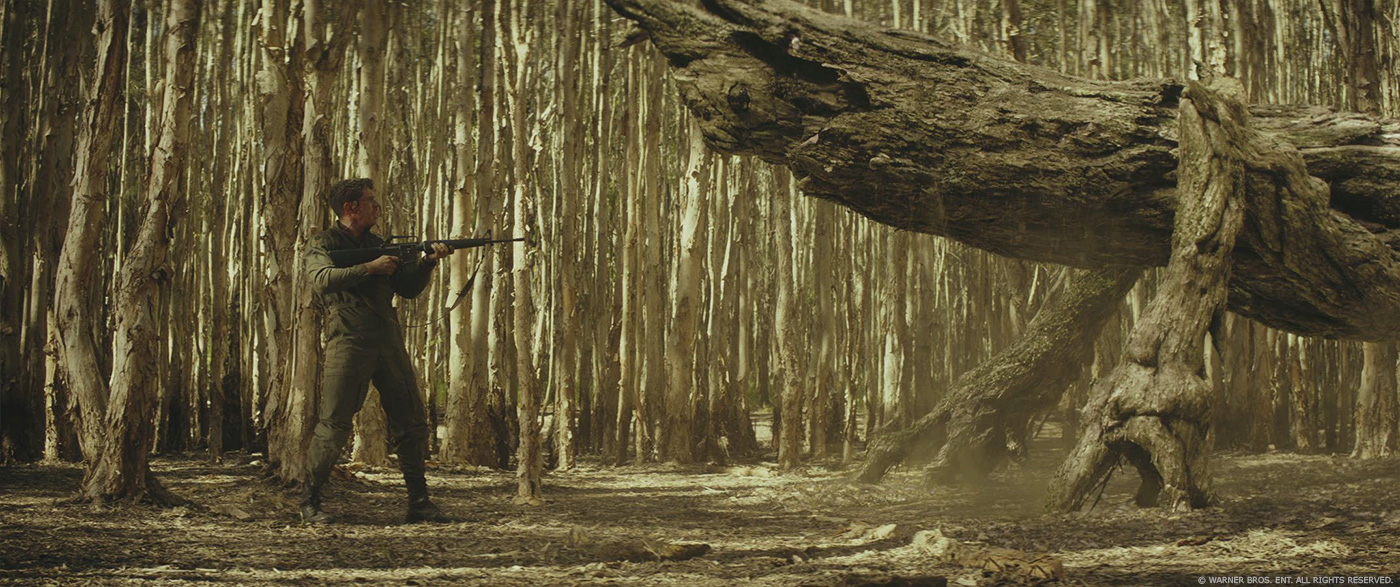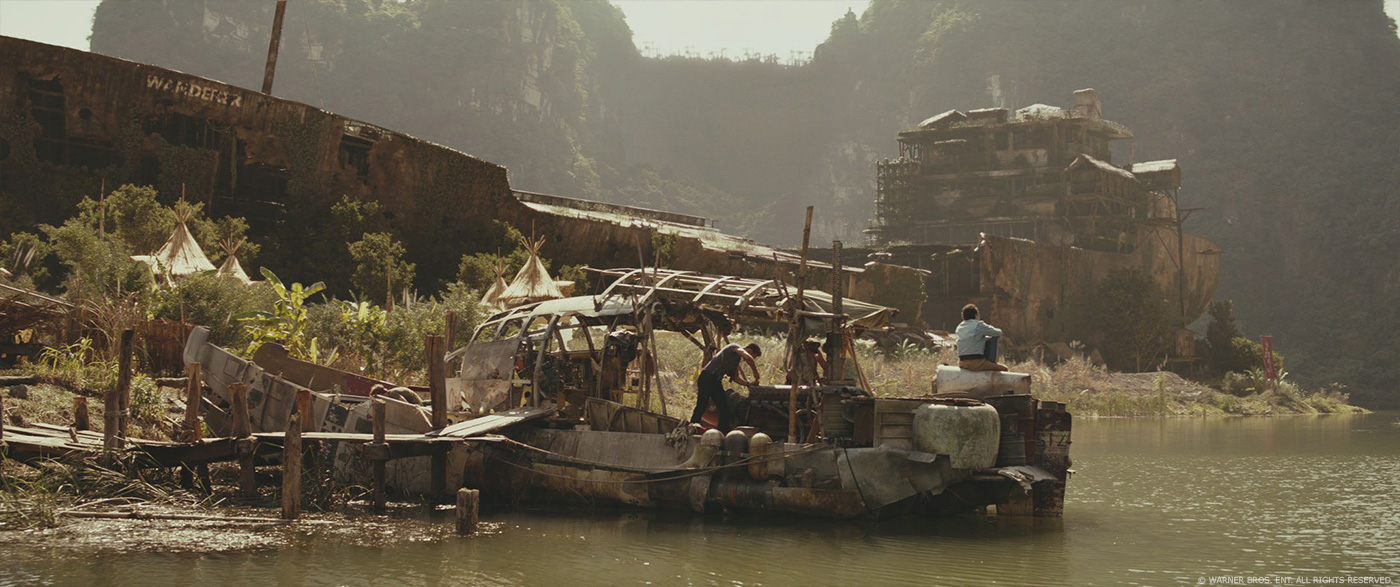At the beginning of the year, Philippe Theroux explained to us the work of Hybride on ARRIVAL. He then took care of the effects of DEEPWATER HORIZON, THE GREAT WALL and ROGUE ONE: A STAR WARS STORY.
How did you get involved on this show?
Hybride and ILM have a strategic alliance, which allows us to collaborate with them on some of their most exciting projects. To this day, this is our 11th collaboration with ILM.
How did you work with director Jordan Vogt-Roberts and VFX Supervisor Stephen Rosenbaum and Jeff White?
We had already worked with Jeff White before on WARCRAFT.
What did it feel like to work on a Kong movie?
It was very exciting to work on such an iconic film classic! The team at ILM, who had had the opportunity to watch the early version of the edited movie, was also super excited about it. Their enthusiasm was inevitably passed on to us so we pushed really hard and stepped it up a notch to make sure our sequences turned out as best as they could.
What are the sequences made by Hybride?
The Iwi village, the wall, and the Wanderer boat wreck were all done by Hybride. We also worked on a lot of shots for the Athena vessel and Aurora Borealis. We also worked on the Stick Creature sequence, which is my personal favorite.
Can you tell us more about your collaboration with ILM and asset sharing?
As I mentioned earlier, we have a long-standing relationship with ILM and we now share assets on a daily basis, as if they were the department next door. Our producers, VFX supervisors, and coordinators are constantly in communication with each other and we work as one service provider instead of two separate entities. For this specific project our sequences were pretty much self-contained so we really didn’t need to share that many assets, or technology, with the ILM crew.
How did you create the various vehicles such as the helicopters?
ILM also worked on some of the sequences involving the choppers. We ingested their assets, including the textures, and placed them into our pipeline for sequences that required that we use the same models.
Some of the final models were done at Hybride. We would receive basic geometry and our modeling team would jump in when we needed to finalize the boat models (for both the Athena and the Wanderer.) We looked up references of boats and boat wrecks to finalize the modeling of the vessel, which included all the details we needed to make them look real. At that point, that’s when we’d present them to the production team for approval.
Can you explain the creation of the IWI village and the Wanderer in detail?
On set, the Iwi village was comprised of a few tents and native artefacts. Our job was to create CG tent models and extend the village in size. Using our in-house crowd system, we added villagers to populate the space.
The village is surrounded by tall mountains, some of which needed to be added in CG to create the illusion that the village tucked in underneath. The Iwi village is also protected by a huge wall of logs that was entirely built in CG along with digital set extensions, CG villagers, clouds & smoke from the fires and the shipwrecked steamer, The Wanderer.
In an impressive establishing shot, we fly over water and swoop through a gap in the wall, revealing the Iwi village and the Wanderer wreck. We created set extensions for the village and inserted CG wall and Wanderer assets, and we also added CG vegetation around them to ensure the integrations would be seamless.
How did you create the Wall opening for the boat?
We thought of a system using counterweights, with big boulders attached to vines being moved up and down to raise a series of logs from the water. A simple rig of the logs with a rotation offset enabled the animators to create a beautiful animation of the opening door. Pulled by the center, the logs were animated offset, creating a wave-like opening to let the visitors float through the immense wall hanging over the water. We also produced water simulations for when the logs interact with the river from the plate.
Can you explain the creation of the Athena in detail?
Working with a basic Athena asset supplied by ILM, we created set extensions for shots in and around the boat, added Huey Helicopters, a CG Boeing Chinook, Sikorsky Sea Stallion and CG crew members on deck.
There was also was a real size model of the deck and a part of the bridge that had already been built on location. The set also had several full sized Huey Helicopters on it. In one of the shots that we’re particularly proud of, the camera flies toward the Athena, swoops over the deck and the bridge where someone is standing and makes a 180-degree turn revealing a huge storm coming from the distance.
In the original photography, the camera actually flew over the set, so we matched moved the camera and tracked our CG Athena under the deck from the set. We added missing parts of the bridge for the fly by, and added additional helicopters on deck. Our FX department simulated the water interaction between the hull of the boat and the sea. Finally, we enhanced a matte painting created by ILM by adding movement and lightning bolts to storm clouds as the storm approaches.
How did you create the various environments around the Athena?
Our FX team used Houdini to create the water environments. Water simulation was important because the boat was often seen travelling at sea. Houdini was particularly helpful to create the waves hitting the bow and was also used for the interactions on the sides and behind the boat.
Can you explain the Aurora Borealis creation in detail?
The Aurora borealis were first simulated with Houdini and presented as long ribbons floating in the sky. After that, the simulated geometry was sent to our Nuke artists where they added the colors and comped them back into the plates.
How did you design and create the Stick Creature?
Early in production we received artwork depicting the stick creature. Our modeling team set out to build a 3D version of the creature in the artwork. We were lucky to have a lot of creative input on the creature. It was especially challenging to get the leg and body junction to look believable. After that, we’d send the rendered image to ILM so their concept artists could paint over it and ask for design tweaks. After a bit of back and forth between the ILM concept artists and our modeling team, we received creative approval for the model.
Can you tell us more about the rigging and animation?
The rigging and animation process was pretty straightforward for the stick creature. It’s been laying in the forest for a long, long time and there’s a lot of debris, dead leaves and moss on top of it, so we created a lot of dirt and moss effects rolling from its back and belly. We also had to have its feet interact with the dead leaves on the ground as it rises up on its legs after being disturbed. To achieve this, we worked with the FX department to integrate the creature in the forest floor.
Unfortunately, any last minute changes in the animation of the creature meant we needed to re-sim the FX entire layers for the shot. The FX department worked with an animated version of the stick creature when we were close to the final, but not yet approved as final so we worked with ILM to get approbation on the FX layers before the final animation was approved. Every layer was then re-rendered with the approved version one last time before being sent to the compositing team.
What was the main challenge on this show and how did you achieve it?
A lot of our sequences required extensive work from our FX department. The Stick creature sequence required a lot of work as I mentioned earlier. Also, the sequences with the Athena at sea needed a lot of water simulation so that was a challenge as well. Sequences for the Iwi village also required atmosphere FX – so basically our FX team was under a lot of pressure to deliver high quality simulations, in a short period of time. Side Effect Houdini was used throughout our sequences to provide the compositing team with great elements in order to achieve photo real integrations.
What do you keep from this experience?
Eating four hot dogs from the local Harvey’s fast food joint a 3am is not a good idea before going to sleep!
Was there a shot or sequence that prevented you from sleep?
None except for those four hot dogs!
How long have you worked on this film?
10 months (March to December 2016).
What was the size of your team?
114 employees.
What is your next project?
We are currently working with ILM on VALERIAN (245 shots) and have other ongoing projects but we can’t mention them yet!
A big thanks for your time.
// WANT TO KNOW MORE?
Hybride: Dedicated page about KONG: SKULL ISLAND on Hybride website.
© Vincent Frei – The Art of VFX – 2017


